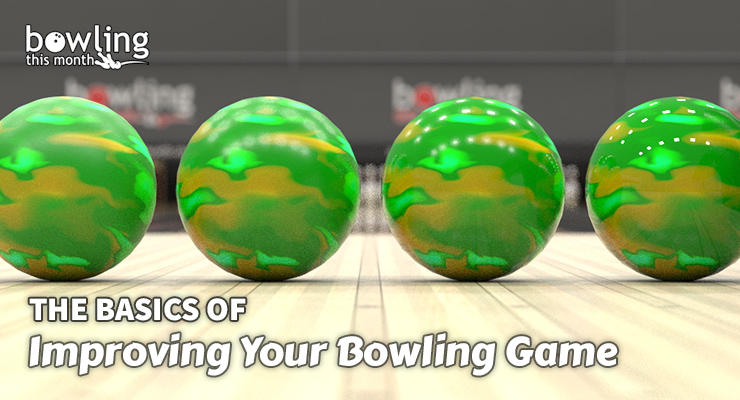So, you’ve been bowling for a while, but never really taken it seriously and now you want to get a little better. Maybe you’ve joined a more competitive league or you’ve finally been bitten by the practice bug.
Or maybe you’re completely new to organized bowling and want to improve, but get lost when the pro shop guy starts throwing around jargon and technical terms because the most thought you’ve put into bowling was remembering your shoe size when talking to the counter staff.
Or maybe you’re an experienced player who knows a fair amount about the sport, but not as much as you should and sometimes feel a little silly to ask a basic question.
If any of the above sounds familiar, then this article is for you. In it, we’ll break things down to their basics, because one of the most common mistakes I see in coaching is assuming that the bowler already knows what you’re talking about. As simple as it is, sometimes it takes a reminder of the very basics for a more advanced concept to become clear and easy to apply for even the most experienced bowlers.
The pins
The object of the game is to knock these over, so it helps to understand it a little bit about them. Most people never get to see them up close, so the picture in our mind of what they look like is a little skewed. The pins are formed in an equilateral triangle, with the centers of each pin exactly 12 inches apart.
The bowling pins form an equilateral triangle, with adjacent pins (such as the 4 pin and 7 pin, for example) spaced 12 inches apart.
The pins are numbered from 1 to 10, as per the diagram. In an ideal strike, the ball will only contact four pins: either the 1-3-5-9 for a righthander or the 1-2-5-8 for a lefthander. For this reason, the 1-3 (or 1-2) is called “the pocket” and it’s the place where you want your ball to hit the pins. All of the other pins are knocked down by the deflection of one pin into another, which is referred to as pin carry.
Good pin carry is when the pins are hitting each other to get strikes. Bad pin carry is any kind of deflection where the pin doesn’t hit its neighboring pin as it is supposed to. More experienced bowlers adjust their strategy based partly on the pin carry they are seeing.
Key terms
Pocket: the 1-3 for righties, the 1-2 for lefties.
Brooklyn: the opposite pocket from the one you’re supposed to hit.
Corner pin: the 7 or 10 pin, called that because they are on the extreme outside of the pin triangle, closest to the gutter.
Pin carry: common term to describe how the pins are deflecting into each other.
Basic concepts
It’s strange to think that the 6 pin is as far from the 10 pin as the 9 pin is, but that’s exactly the kind of visual misperception that bowlers face. We face the same kind of misperceptions about the lane, which will be discussed more later. The more important thing to take away from understanding the pins relates to pin carry.
As stated above, the ball should only contact four pins, which means the entire process of getting a strike (or converting a multi-pin spare) depends on the correct deflection. “Round objects hitting other round objects” is a phrase often used to describe why seemingly identical hits yield different results. While that is somewhat true, more experienced bowlers will start to recognize the kinds of angles that work best for them.
In my article See the Clues, Make the Moves, I describe that the 6 pin for righties and 4 pin for lefties are key indicators of what kind of pin carry (and, by extension, ball motion) you have. Learning to pick up what these pins are doing gives you indications of what is happening and what you need to do in order to correct the problem.
Advanced concepts
Beyond just watching the 6 pin (or 4 pin), the other important pin to watch is the 5 pin. It is also by far the hardest pin to watch, because it is hidden by the headpin and also the ball as it goes through the pins.
In a perfect strike, the 5 pin will hit the 8 pin for righties and the 9 pin for lefties, but not all strikes are perfect and not all shots are strikes. How the 5 pin behaves tells you more about your ball motion than anything else. For the more advanced bowlers reading this article, the challenge is to see where the 5 pin ...
This article is only available to Bowling This Month subscribers. Click below to get instant access to this article and all of our other premium instructional content.
Subscribe to Bowling This Month
Already a Bowling This Month subscriber? Click here to log in.
